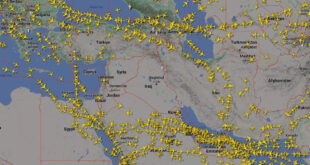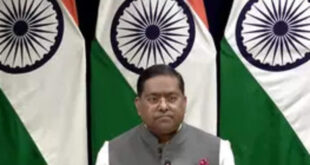[ad_1]

The Indian hotel industry is on the cusp of a remarkable recovery, with strong demand anticipated to drive double-digit revenue growth in FY2024, according to a report by ICRA. The sustained revival in domestic leisure travel, along with demand from meetings, incentives, conferences, and exhibitions (MICE) and business travel, is poised to play a pivotal role in this resurgence. Furthermore, the return of foreign tourist arrivals (FTAs) and the impact of events such as the G20 summit and the ICC World Cup 2023 have bolstered the industry.
Revenue and occupancy projections
ICRA’s report reveals that pan-India premium hotel occupancy is estimated to reach approximately 70-72 per cent in FY2024, following a recovery to 68-70 per cent in FY2023. Additionally, the average room rates (ARRs) for premium hotels are expected to range from INR 6,000-6,200 in FY2024. Although occupancy is projected to reach a decade-high, the Revenue Per Available Room (RevPAR) is predicted to remain at a 20-25 per cent discount to the FY2008 peak.Several factors are contributing to this resurgence. Improvements in infrastructure and air connectivity, favorable demographics, and a rise in large-scale MICE events due to the opening of new convention centers are fostering a robust demand. The report highlights that larger players will benefit from both revenues and profit shares generated through hotel expansions via management contracts and operating leases.
Regional insights
Mumbai and Delhi, being gateway cities, are expected to experience occupancy rates exceeding 75 per cent in FY2024, driven by transient passengers, business travelers, and MICE events. While Pune and Bengaluru might lag behind other markets, they are also expected to witness significant improvements in FY2024 compared to FY2023. ARRs, although trailing the FY2008 peak, are anticipated to see a healthy year-on-year increase in FY2024.
Operating margins and sustainability measures
The Indian hotel industry has successfully sustained many cost-rationalisation measures adopted during the Covid-19 pandemic, coupled with the benefits of operating leverage. Margins have expanded significantly when compared to pre-Covid levels. Companies have also transitioned to renewable power sources, managed cost inflation, and maintained strict control over fixed costs, bolstering margins. Although ICRA anticipates some moderation in margins from FY2023 levels due to hotels undergoing renovations and maintenance activities, they are expected to remain notably higher than pre-Covid levels.Debt metrics & capital structures
With increased earnings and cash flows, ICRA expects the capital structure of hoteliers to improve. Asset monetization is likely to focus on non-revenue generating assets. Debt metrics for hoteliers are projected to surpass pre-Covid levels in FY2024. The extent of improvement in return on capital employed (RoCE) is contingent on the expansion strategy and may be limited by the high capital cost of new properties due to increased land and construction costs.
Supply dynamics
Although the supply of hotel rooms has witnessed a revival in recent months, the report indicates that the supply is expected to grow at a CAGR of 3.5-4 per cent over the medium term, lagging behind the demand. Land availability constraints in premium micro-markets of metros and larger cities are limiting the addition of new supply, with rebranding or property upgrades and greenfield projects mainly found in suburbs. There has been an increase in per-room construction costs by 20-25 per cent compared to pre-Covid levels due to cost inflation.
ICRA’s report underscores the resilience of the Indian hotel industry and its potential for robust growth in the coming fiscal year. With the ongoing recovery, this sector stands poised to be a key contributor to the nation’s economic revival and a prime destination for travelers from across the globe.
Source link





